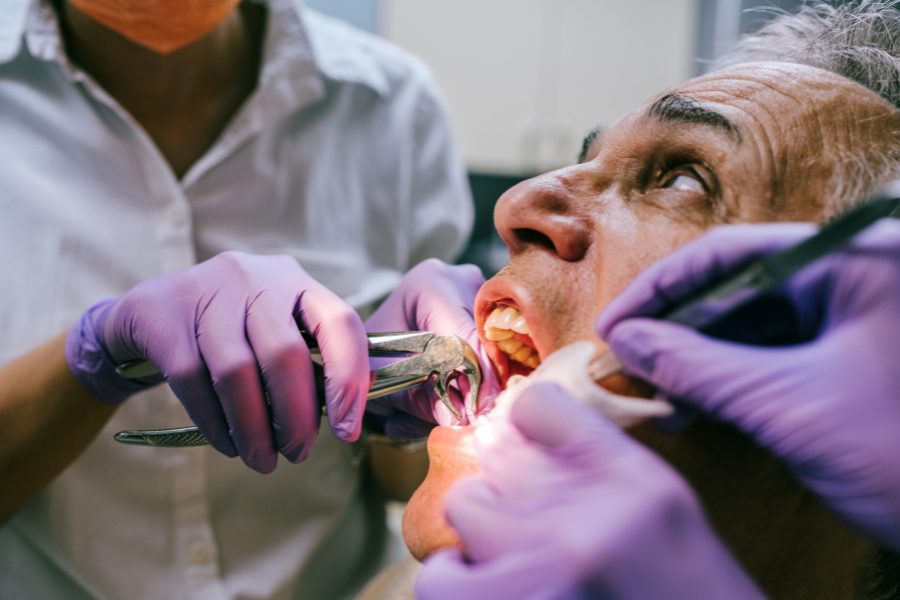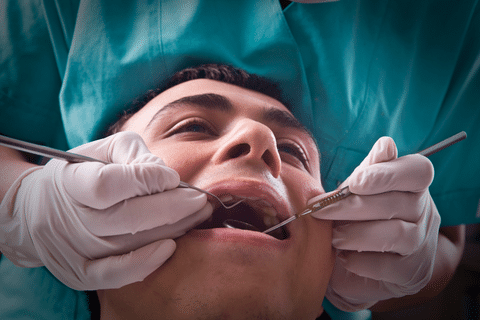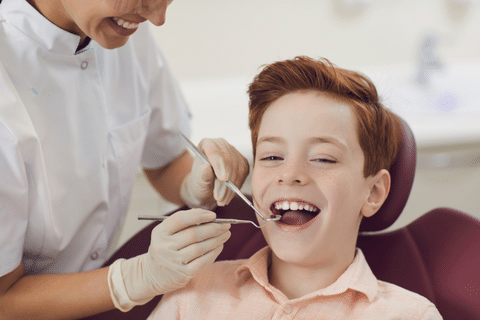
OUR SERVICES
Tooth Extractions in Calgary

Let our professionals help you no matter if you’re getting your wisdom teeth out or have an infected tooth that needs to go away. We offer you a stress-free experience and comfort and safety are our greatest priorities. here at Kherani Dental at Aspen.
Calgary Tooth Extraction
While dentists prefer to avoid performing tooth extractions whenever possible, it is a procedure that many will experience at one point or another. Fortunately, this common procedure can be performed quickly, efficiently, and with minimal discomfort.
Many teens and some adults will have their wisdom teeth removed, but there are several other reasons that an extraction might be required. They include:
Crowding
Teeth may sometimes be pulled in preparation for braces. If there is not enough room in your mouth, it may not be possible to align your teeth properly, requiring the removal of one or more teeth. Likewise, if there is not enough room for a new tooth to erupt through the gums, an extraction may be recommended by your dentist.
Infection
Tooth decay may sometimes extend to the pulp of the tooth, where nerves and blood vessels are located. Bacteria entering the pulp can lead to an infection that is typically corrected with root canal therapy (RCT), but if the infection is so severe that RCT and antibiotics prove ineffective, extraction may be called for.
Preventing Possible Infection
In some cases, immune-compromised patients (such as those receiving chemotherapy or an organ transplant) may have a tooth extracted when there is the risk of infection in the tooth. Similarly, if a tooth has loosened due to periodontal (gum) disease, it may be necessary to extract it.
Preparing For Your Tooth Extraction
To ensure that everything goes smoothly with your tooth extraction, make sure to inform your dentist if you suffer from any of the following conditions:
It is also important to let your dentist know if you will soon be receiving treatment for another medical condition with an intravenous drug called a bisphosphonate. Your extraction should be done before this treatment begins to prevent the risk of osteonecrosis.
The Extraction Procedure
The exact procedure will vary depending on whether the tooth is visible (simple extraction) or impacted (surgical extraction).
A simple extraction involves a local anaesthetic to numb the area surrounding the tooth. During the procedure, you will feel some pressure, but there should be no pain. The dentist will first loosen the tooth with a tool called an elevator, then remove it with forceps.
If you require a surgical extraction, you will likely receive both local anaesthesia and intravenous anaesthesia. With certain medical conditions, you may receive general anaesthesia, which will render you unconscious. With this type of extraction, common with wisdom teeth, the dentist will make a small incision in your gum to remove the tooth. It may also be necessary to cut the tooth or remove some surrounding bone.
Recovering From Your Tooth Extraction
It typically requires a few days to recover from the extraction. You can help the recovery process proceed smoothly with the following steps:
For more information about tooth extractions, contact Kherani Dental at Aspen.



